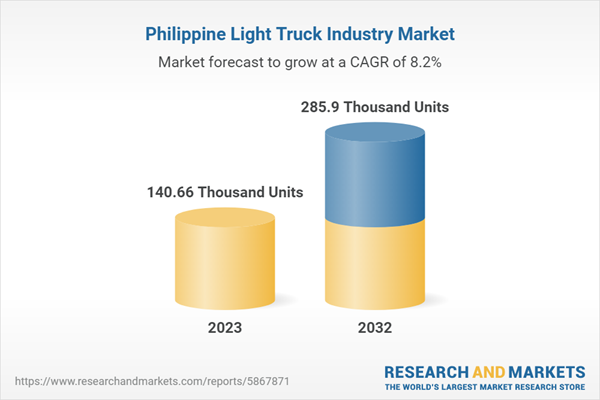In 2021, the Philippine Department of Trade and Industry (DTI) enacted a law on automobile import safeguards to protect the domestic automobile business. DTI Secretary Ramon Lopez announced that the country would begin imposing a tariff of PHP 70,000 (US$ 1,460) on passenger cars and PHP 110,000 (US$ 2,262) on light commercial vehicles.
Cars from Thailand, the United States, Japan and Europe are also subject to this rule. Cars from some countries, such as the People's Republic of China, South Korea, Malaysia, and some Indonesia, are exempted from this rule.On August 6, 2021, the safeguard duty on imported cars was suspended. The DTI's decision to lift the safeguard restriction on imported cars will go a long way in helping the industry recover, as imported cars account for the vast majority of cars sold in the Philippines.
Sales continued to rebound following the lifting of the embargo and the gradual increase in mobility in the Philippines. In addition, automobile sales have recovered from the impact of the country's increased automobile taxes. According to the analysis, the Philippine automotive industry saw a 31.3% increase in sales in 2022, with a total of approximately 350,000 units sold. The highest growth rates were recorded for light commercial vehicles and Asian utility vehicles (AUVs). By 2023, total automobile sales in the Philippines are expected to increase to 400,000 units.
From 2018-2022, according to the analysis, annual sales of light trucks in the Philippines show a trend of decreasing and then increasing, with a CAGR of -4.3% from 2018-2022. Affected by Covid-19, the Philippine light truck market suffered a setback in 2020 with a sharp decline of 40.5% to 90,000 units. With the gradual contact of the embargo, the economy is starting to recover. annual sales of light trucks in the Philippines in 2022 will be around 130,000 units, a 25.3% increase year-on-year.
The e-commerce market in the Philippines is in a fast-growing development phase with the rising number of mobile smartphone users and the gradual formation of online shopping spending habits among consumers, boosting the logistics industry and leading to a rising demand for light trucks in the Philippine market. Investors from China and Japan, among others, have committed to establish or expand existing logistics facilities in Southern Luzon, Philippines; the rise of e-commerce (73.9 million users by 2021) along with the popularity of the internet has increased the demand for industrial freight warehouses in the country.
As an archipelagic and import-oriented country that is highly dependent on the sea, light trucks are widely used in ports and airports in the Philippines. With the government's rapid improvement in logistics infrastructure and the growing e-commerce market, the Philippines' logistics industry and the market for small package delivery services have plenty of room for future growth, and the demand for light trucks will continue to grow.
The analyst expects the sales volume of Philippines' light trucks to reach 286,000 units in 2032 and the CAGR is 8.2% from 2023 to 2032. The Philippines has been a leader in the development of light trucks since the 1970s, and the country has been a leader in the development of light trucks since the 1980s.
Topics covered:
- Overview of the Light Truck Industry in the Philippines
- Economic and Policy Environment of the Light Truck Industry in the Philippines
- What is the impact of COVID-19 on the light truck industry in the Philippines?
- Philippines Light Truck Industry Market Size, 2023-2032
- Analysis of Major Philippine Light Truck Industry Players
- Key Drivers and Market Opportunities in the Philippines Light Truck Industry
- What are the key drivers, challenges and opportunities for the Light Truck industry in the Philippines during the forecast period 2023-2032?
- Which are the key players in the Philippines Light Truck Industry market and what are their competitive advantages?
- What is the expected revenue of the Philippines Light Truck Industry market during the forecast period of 2023-2032?
- What strategies have been adopted by the key players in the market to increase their market share in the industry?
- Which segment of the Philippines light truck industry market is expected to dominate the market by 2032?
- What are the key unfavorable factors facing the Light Trucks industry in the Philippines?
Table of Contents
1. Overview of the Philippines
1.1 Geographical Situation
1.2 Demographic Structure of the Philippines
1.3 Economic Situation in the Philippines
1.4 Philippine Minimum Wage 2013-2022
1.5 Impact of COVID-19 on the Light Truck Industry in the Philippines
2. Operation of the Light Truck Industry in the Philippines 2018-2022
2.1 Status of Light Truck Production in the Philippines (Pickups, Vans, Minivans, etc.)
2.2 Light Truck Sales in the Philippines
2.3 Import and Export of Light Trucks in the Philippines
2.4 Development of Electric Light Trucks in the Philippines
3. Light Truck Policy Environment in the Philippines:
3.1 Driver's License Requirements (Are They Different from Passenger Cars)
3.2 Licensing Fees
4. Market Competition in the Philippine Light Truck Industry
4.1 Barriers to Entry in the Philippine Light Truck Industry
4.1.1 Brand Barriers
4.1.2 Quality Barriers
4.1.3 Capital Barriers
4.2 Competitive Structure of the Light Truck Industry in the Philippines
4.2.1 Bargaining Power of Light Truck Suppliers
4.2.2 Consumer Bargaining Power
4.2.3 Competition in the Light Truck Industry in the Philippines
4.2.4 Potential Entrants in the Light Truck Industry
4.2.5 Alternatives to Light Trucks
5. Analysis of Major Light Truck Manufacturers in the Philippines
5.1 Ford
5.1.1 Overview of Ford Enterprises
5.1.2 Ford Operations
5.2 Toyota
5.2.1 Overview of Toyota Enterprises
5.2.2 Toyota Operations
5.3 Nissan
5.3.1 Nissan Corporate Profile
5.3.2 Nissan Operations
5.4 Mitsubishi
5.4.1 Mitsubishi Corporate Profile
5.4.2 Mitsubishi Operations
5.5 Mazda
5.5.1 Mazda Corporate Profile
5.5.2 Mazda's Operations
5.6 Isuzu
5.6.1 Isuzu Company Profile
5.6.2 Isuzu's Operations
5.7 HMP
5.7.1 HMP Business Overview
5.7.2 HMP Operations
6. Philippines Light Truck Industry Outlook, 2023-2032
6.1 Analysis of Factors for the Development of the Light Truck Industry in the Philippines
6.1.1 Drivers and Growth Opportunities for the Light Truck Industry in the Philippines
6.1.2 Threats and Challenges Facing the Light Truck Industry in the Philippines
6.2 Supply Forecast for Light Truck Industry in the Philippines
6.3 Light Truck Market Demand Forecast in the Philippines
6.4 Import and Export Forecasts for the Light Truck Industry in the Philippines
6.5 Revenue Forecasts for the Light Truck Industry in the Philippines
Companies Mentioned
- Ford
- Toyota
- Nissan
- Mitsubishi
- Mazda
- Isuzu
- HMP
Methodology
Background research defines the range of products and industries, which proposes the key points of the research. Proper classification will help clients understand the industry and products in the report.
Secondhand material research is a necessary way to push the project into fast progress. The analyst always chooses the data source carefully. Most secondhand data they quote is sourced from an authority in a specific industry or public data source from governments, industrial associations, etc. For some new or niche fields, they also "double-check" data sources and logics before they show them to clients.
Primary research is the key to solve questions, which largely influence the research outputs. The analyst may use methods like mathematics, logical reasoning, scenario thinking, to confirm key data and make the data credible.
The data model is an important analysis method. Calculating through data models with different factors weights can guarantee the outputs objective.
The analyst optimizes the following methods and steps in executing research projects and also forms many special information gathering and processing methods.
1. Analyze the life cycle of the industry to understand the development phase and space.
2. Grasp the key indexes evaluating the market to position clients in the market and formulate development plans
3. Economic, political, social and cultural factors
4. Competitors like a mirror that reflects the overall market and also market differences.
5. Inside and outside the industry, upstream and downstream of the industry chain, show inner competitions
6. Proper estimation of the future is good guidance for strategic planning.

LOADING...
Table Information
| Report Attribute | Details |
|---|---|
| No. of Pages | 60 |
| Published | August 2023 |
| Forecast Period | 2023 - 2032 |
| Estimated Market Value in 2023 | 140.66 Thousand Units |
| Forecasted Market Value by 2032 | 285.9 Thousand Units |
| Compound Annual Growth Rate | 8.2% |
| Regions Covered | China |
| No. of Companies Mentioned | 7 |









